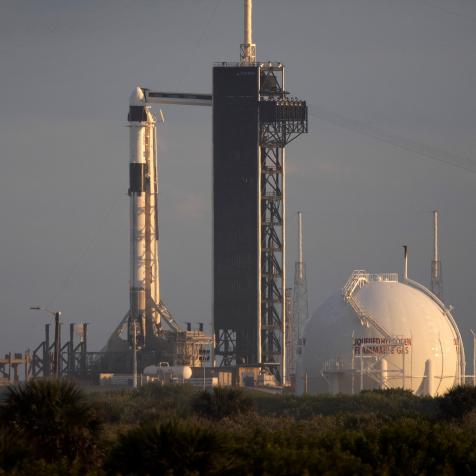
NASA/Aubrey Gemignani
Liftoff of NASA and SpaceX Crew-2!
The NASA and SpaceX Crew-2 mission launched on Friday, April 23 at 5:49A ET from the NASA Launch Complex 39A. This historic milestone marks the second operational mission of SpaceX’s Crew Dragon. Onboard was NASA astronaut Shane Kimbrough, NASA astronaut Megan McArthur, ESA astronaut Thomas Pesquet, and JAXA astronaut Akihiko Hoshide. After a 23-hour journey, Crew-2 successfully docked with the International Space Station (ISS) on April 24 at 5:08A ET.
Here's everything that happened from launch day to the Crew-2's arrival at the ISS.
(Updated April 24, 2021)
In the early morning hours of Friday, April 23, NASA astronaut Shane Kimbrough, NASA astronaut Megan McArthur, ESA astronaut Thomas Pesquet, and JAXA astronaut Akihiko Hoshide successfully launched in Endeavor, the SpaceX Crew Dragon spacecraft, atop a Falcon 9 rocket from the Kennedy Space Center Launch Pad 39A at 5:49A EDT.
Weather conditions were favorable at the Florida space coast with more than 90% "go for launch." Everything went as planned and the astronauts even had some "downtime" to play a little rock, paper, scissors game before launch. Here's the play-by-play of the Crew-2 launch.
Congrats NASA and SpaceX on another successful crewed launch from U.S. soil! "Glad to be back in space for all of us," said Shane Kimbrough NASA Astronaut and Commander of the Crew-2 mission.
After a 23-hour journey, Crew-2 successfully docked with the International Space Station (ISS) on April 24 at 5:08A ET. Once standard leak checks and pressurization between the spacecraft and ISS in preparation for hatch opening were complete, the astronauts were welcomed aboard the ISS, joining the Expedition 65 crew of Shannon Walker, Michael Hopkins, Victor Glover, and Mark Vande Hei of NASA, as well as Soichi Noguchi of JAXA and Roscosmos cosmonauts Oleg Novitskiy and Pyotr Dubrov.
More on the Crew-2 Launch Mission
Journey to the ISS: NASA and SpaceX Crew-2 Mission 22 Photos
From launch preparation to docking with the International Space Station, here are some highlights from the NASA and SpaceX Crew-2 mission.
NASA's SpaceX Crew-2 Mission Videos 2 Videos
The NASA and SpaceX Crew-2 mission launched on Friday, April 23 at 5:49A ET from the NASA Launch Complex 39A. After a 23-hour journey, Crew-2 successfully docked with the International Space Station (ISS) on April 24 at 5:08A ET. The astronauts will conduct research at the ISS for the next six months.
Meet the Astronauts: NASA and SpaceX Crew-2 Mission 10 Photos
The NASA and SpaceX Crew-2 mission is set to launch via a Falcon 9 rocket in a Crew Dragon on Friday, April 23, at 5:49A EDT, from Launch Complex 39A at NASA’s Kennedy Space Center in Florida. Let’s meet the astronauts who will be staying aboard the International Space Station for six months.
Follow the Crew-2's journey to the ISS right here on Discovery.com and catch up on past NASA and SpaceX missions on SPACE LAUNCH LIVE, streaming on discovery+.





















